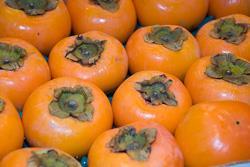
This year’s Japanese persimmon season is shaping up to be hard work for exporters, with lower yields than usual anticipated thanks to severe frost in key growing areas in March and April.
Japan’s persimmon exports are made up of the Fuyu variety, which is favoured in large quantities in Thailand, and the Hiratane (seedless) variety, which is exported to Hong Kong.
It is predicted that the Fuyu crop this year will be around 70-80 per cent of average, while the Hiratane will be around half the average volume. Quality is, however, expected to be good, with sizing a little smaller than average this year.
Fuyus are harvested from early November until early December, while Hiratane persimmons usually have a harvest season from early September until early November.
According to Japanese exporter IPM Nishimoto’s Don Okazoe, the Japanese persimmon trade is coming under increasing pressure from neighbouring Korea, who is producing a cheaper product of ever-increasing quality.
“The most valuable export customer for Japanese persimmons is Thailand, and second is Hong Kong. Therefore, IPM Nishimoto is targeting those two countries,” Mr Okazoe told Fruitnet.com.
“Korean persimmons are now quite strong in the Hong Kong market. The main reason is their inexpensive price, and in addition Korean persimmons are getting better taste than they used to have.
“But in fact, there is still demand for Japanese persimmons from those two countries. Especially around December, demand for Japanese persimmons increases because the Korean persimmon season finishes.
“Chinese New Year is another key opportunity for Japanese persimmons. Thus these two key demands are very important for IPM Nishimoto’s future.”
Mr Okazoe said his company is willing and eager to look at new markets for Japanese persimmons, and he added that the company is also looking at exporting the Jiro persimmon variety from next year.



